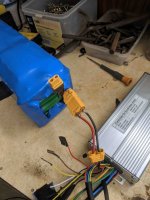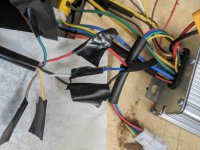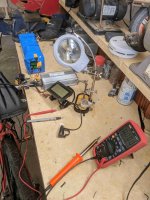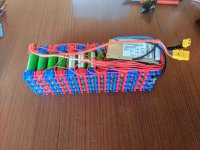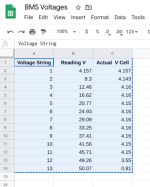Hi, I'm in Covid 19 lock down here in New Zealand building an ebike. This is my first build so I'm I'm a total newbie. I've built a 4p13s 48v battery that seems to be charging ok.
I bought this kit on Amazon
https://www.amazon.com/JAXPETY-1000W-Electric-Bicycle-Conversion/dp/B07F1FLHC8/ref=cm_cr_arp_d_pl_foot_top?ie=UTF8&th=1
I then decided I would prefer a LCD readout so bought this controller / lcd kit:
https://aliexpress.ru/item/32616948234.html
I have read Micah Toll's ebike book and found this helpful in putting the bits together. However when I completed all the connections and attached the battery I got no LCD startup (screen remains blank) and the throttle does nothing. I'm not quite sure what I've done wrong. Obviously I have had to re-solder connections from the original Contoller kit onto the new LCD controller.
Where might I start with trouble shooting? I'm not even sure my new controller and LCD are compatible with the Amazon rear hub motor.
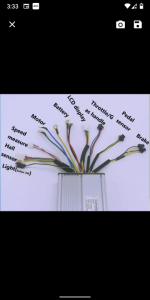
At this stage I haven't installed the pas sensor since I don't have the tools to install yet. I'm Not sure if this is part of the problem?
Would really appreciate some help sorting this out.
Guy
I bought this kit on Amazon
https://www.amazon.com/JAXPETY-1000W-Electric-Bicycle-Conversion/dp/B07F1FLHC8/ref=cm_cr_arp_d_pl_foot_top?ie=UTF8&th=1
I then decided I would prefer a LCD readout so bought this controller / lcd kit:
https://aliexpress.ru/item/32616948234.html
I have read Micah Toll's ebike book and found this helpful in putting the bits together. However when I completed all the connections and attached the battery I got no LCD startup (screen remains blank) and the throttle does nothing. I'm not quite sure what I've done wrong. Obviously I have had to re-solder connections from the original Contoller kit onto the new LCD controller.
Where might I start with trouble shooting? I'm not even sure my new controller and LCD are compatible with the Amazon rear hub motor.

At this stage I haven't installed the pas sensor since I don't have the tools to install yet. I'm Not sure if this is part of the problem?
Would really appreciate some help sorting this out.
Guy



